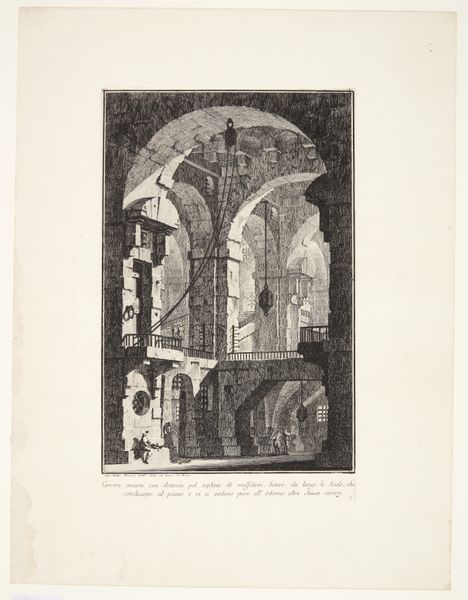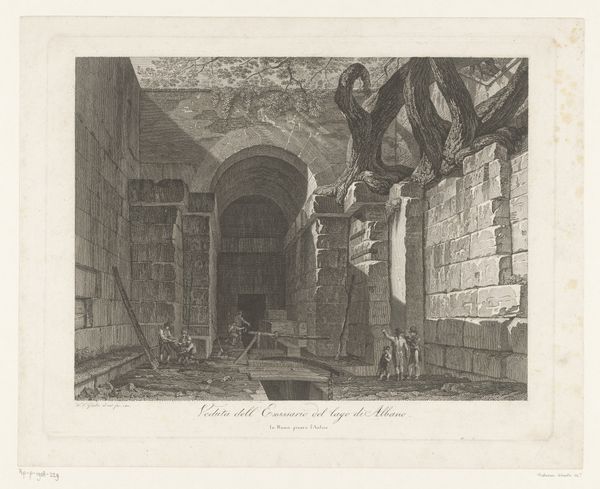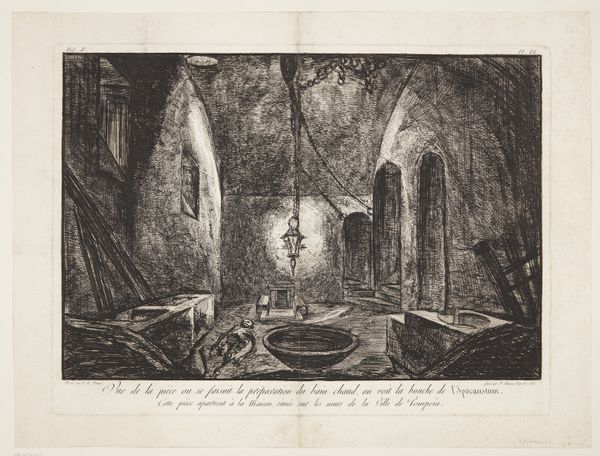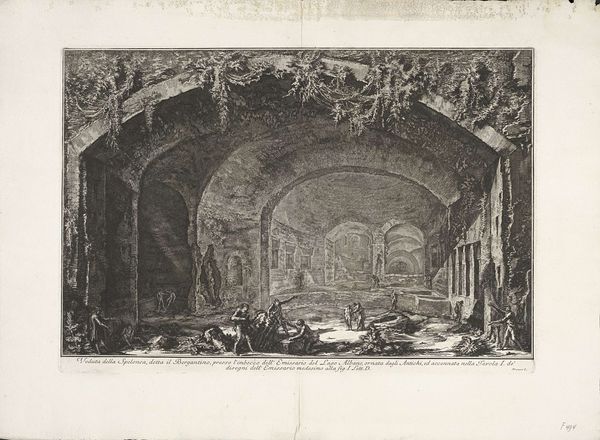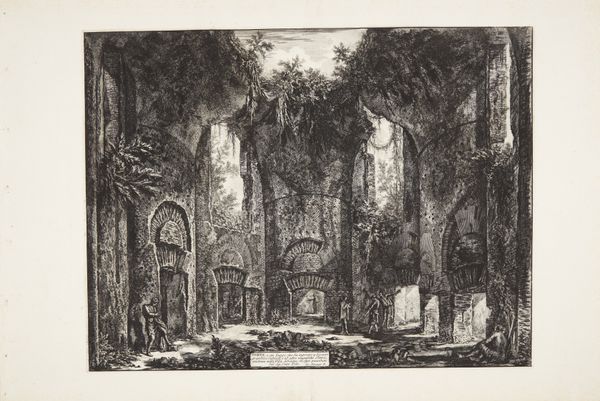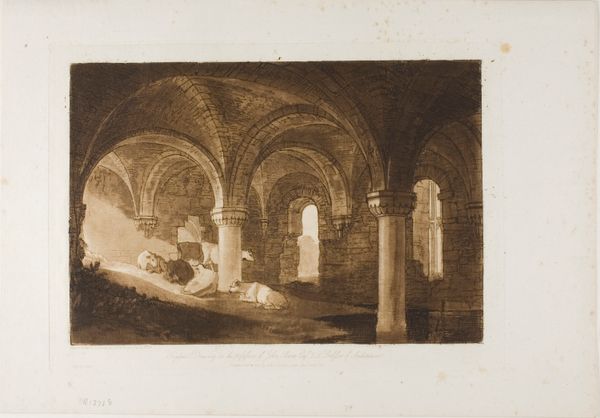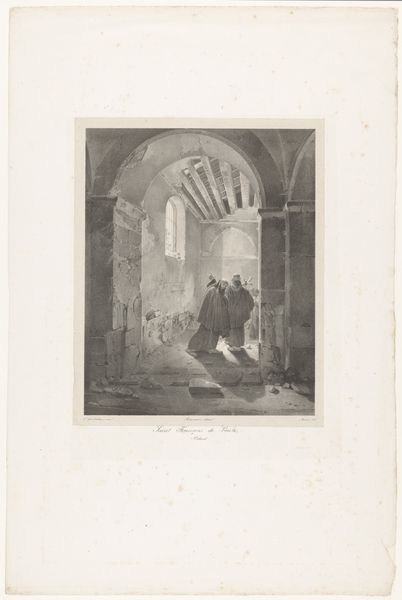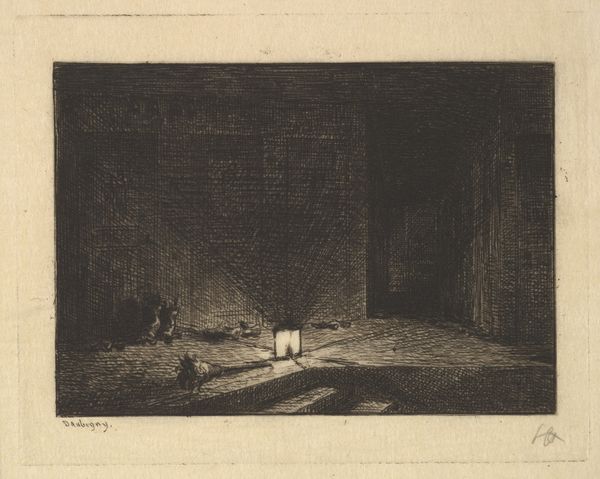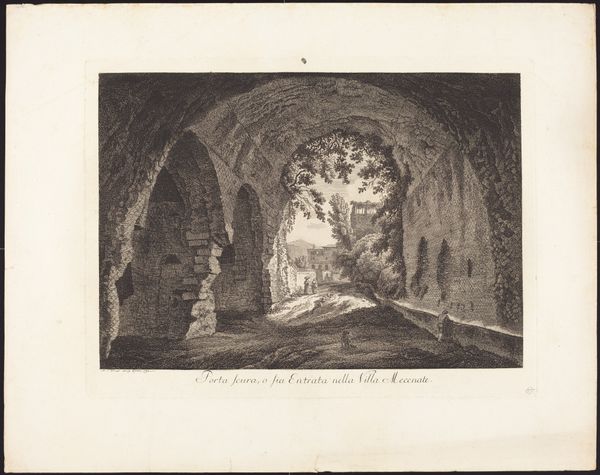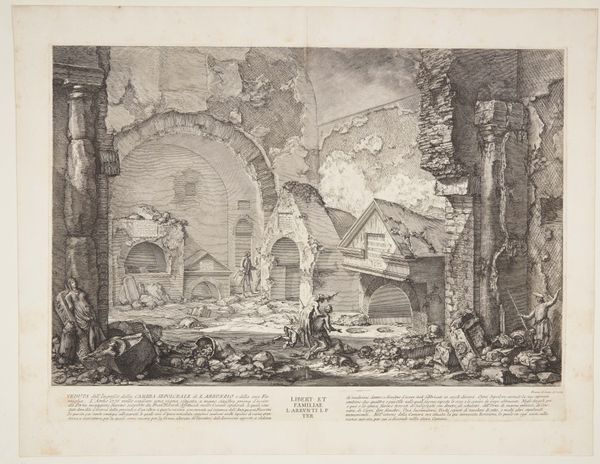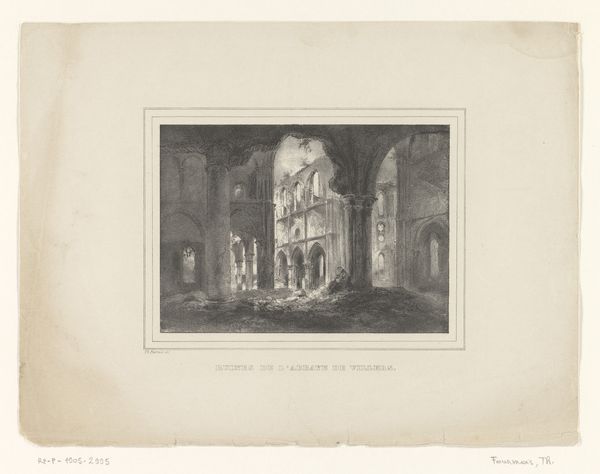
Vue de la piecé ou se faisoit la préparation du bain chaud, dans une maison batie sur les murs de la Ville de Pompeiia, et en faisant partie 1805
0:00
0:00
print, engraving, architecture
#
neoclacissism
# print
#
history-painting
#
engraving
#
architecture
Dimensions: 430 mm (height) x 576 mm (width) (plademaal)
Curator: Here we have Francesco Piranesi's "Vue de la piecè ou se faisoit la préparation du bain chaud, dans une maison batie sur les murs de la Ville de Pompeiia, et en faisant partie," an engraving from 1805. Editor: It’s a shadowy scene, almost theatrical. I see two bath-like structures, quite austere. A stark, dark, romantic view of domestic space. Curator: Exactly. Piranesi was fascinated with depicting the material remains of antiquity. Note the texture achieved through the engraving process. Look at how those stark lines articulate form and shadow. He’s using printmaking technology to capture the actual physicality of these ruins, essentially mass-producing "artifacts." Editor: I'm struck by the void-like atmosphere and that single bowl in the foreground, drawing the eye like an empty oracle. A container, yes, but devoid of water, its purpose lost in time, and in darkness. It also draws the viewers in…to where exactly? Curator: I see that reading. It's definitely playing with ruin as spectacle for wealthy European consumers during the rise of Neoclassicism. The creation of the artifact of itself as an object of desire and of speculation! Who would’ve been in that space? How would they have experienced these processes materially? It’s no longer about grand narratives, but instead domestic daily life. Editor: This almost has an uncanny sense. There is life and the lack thereof, frozen like the moment after the catastrophe but with an oddly ordered arrangement. What kind of cultural memory does such iconography stir? A yearning for past pleasures? A reminder of fragility? Curator: And it was all achieved through this meticulous engraving process—layering lines and textures to build depth and volume, creating an evocative atmosphere. An amazing feat! Editor: Thinking about this lost moment is, indeed, fascinating. This deep plunge into absence allows me to appreciate better the passage of time. Curator: Yes. By attending to those lines, textures, and production methods, we glean much information from material about this artifact's origins! Editor: A shadowy image of bath time provides the perfect backdrop for reflection.
Comments
No comments
Be the first to comment and join the conversation on the ultimate creative platform.


